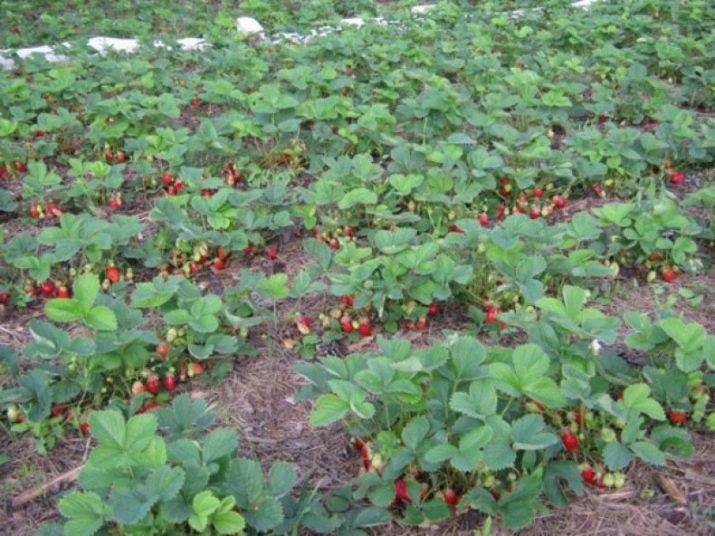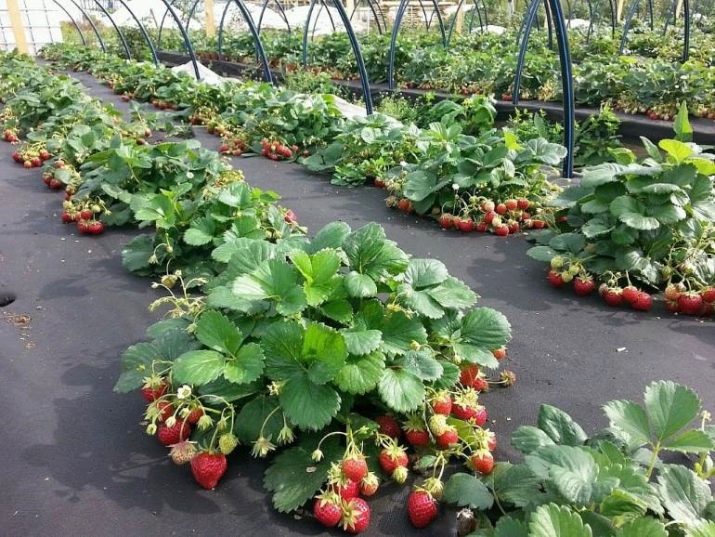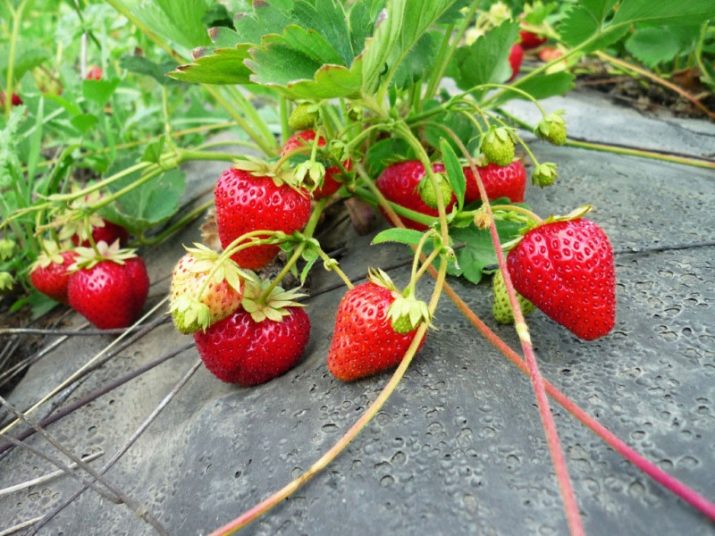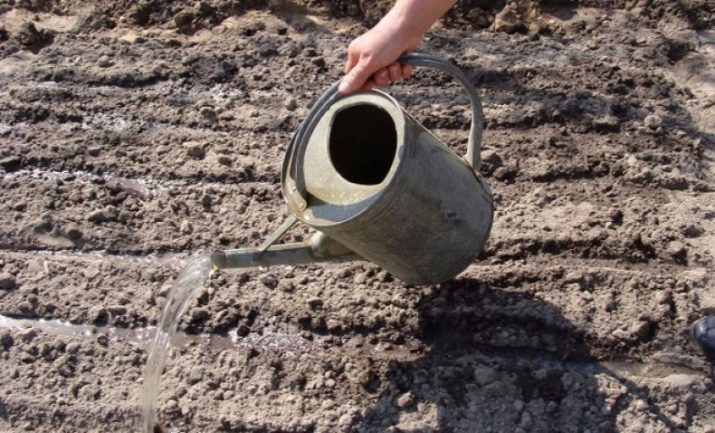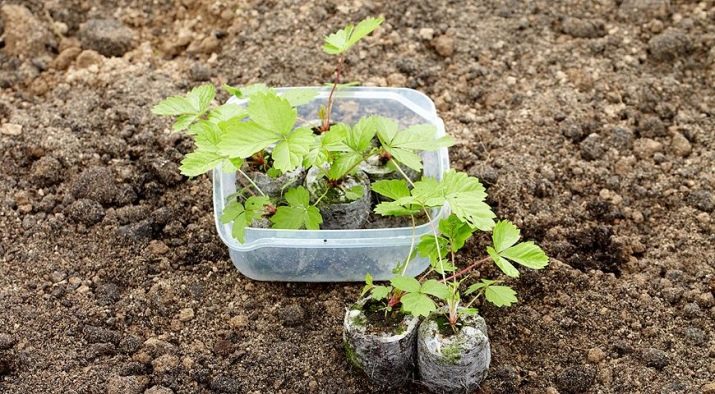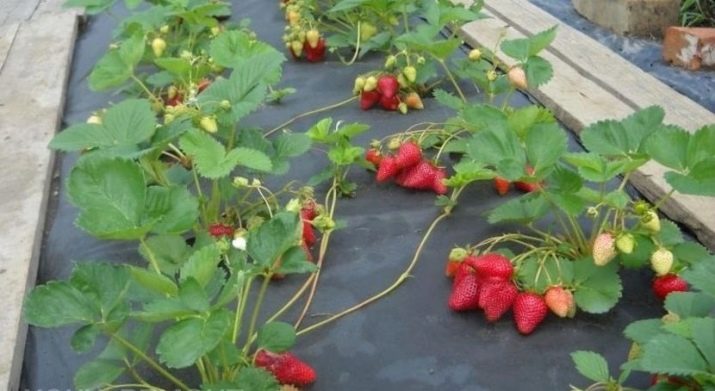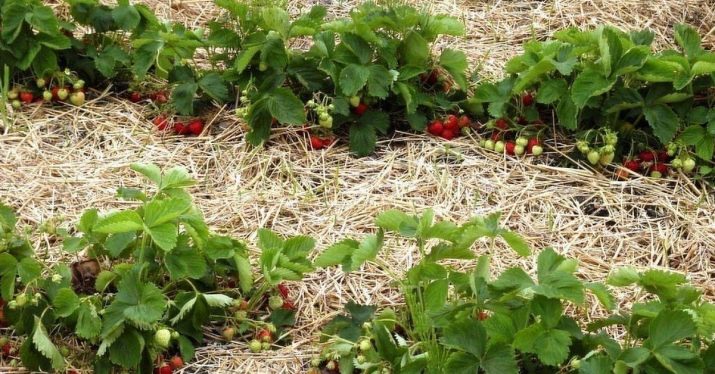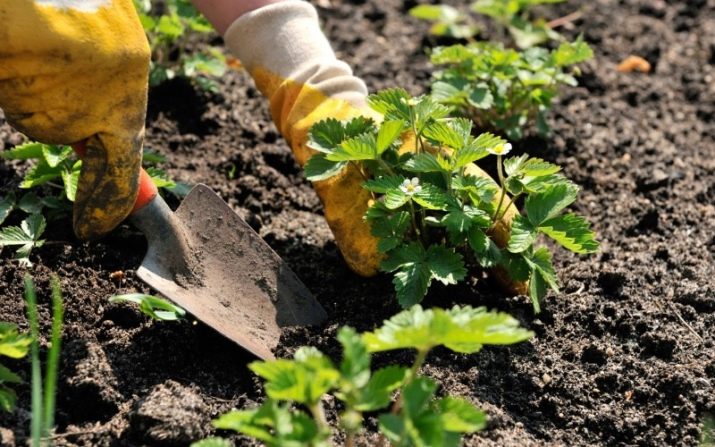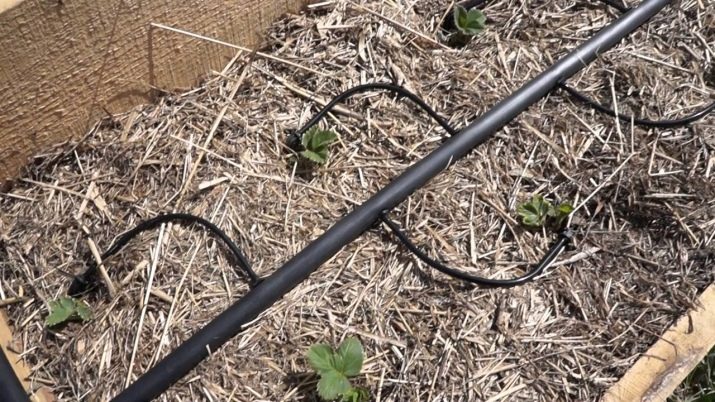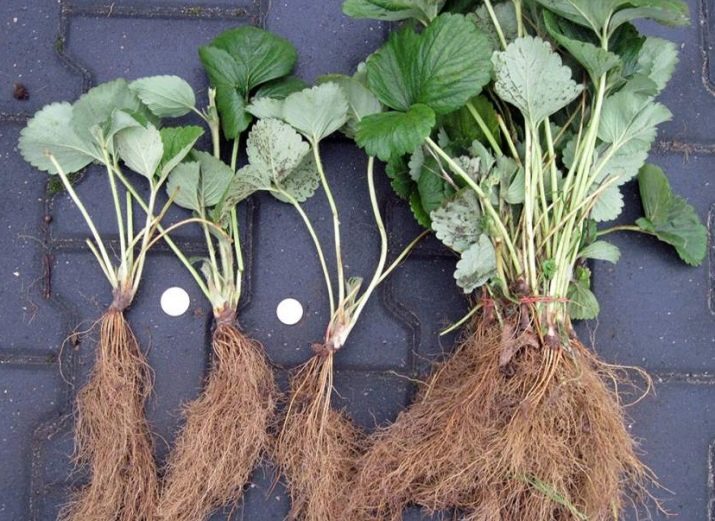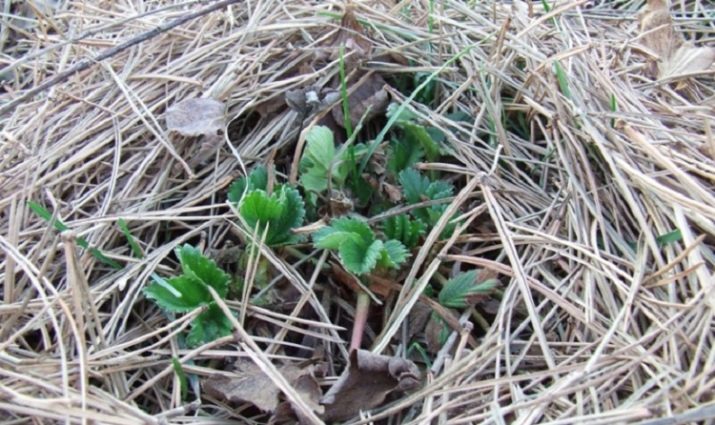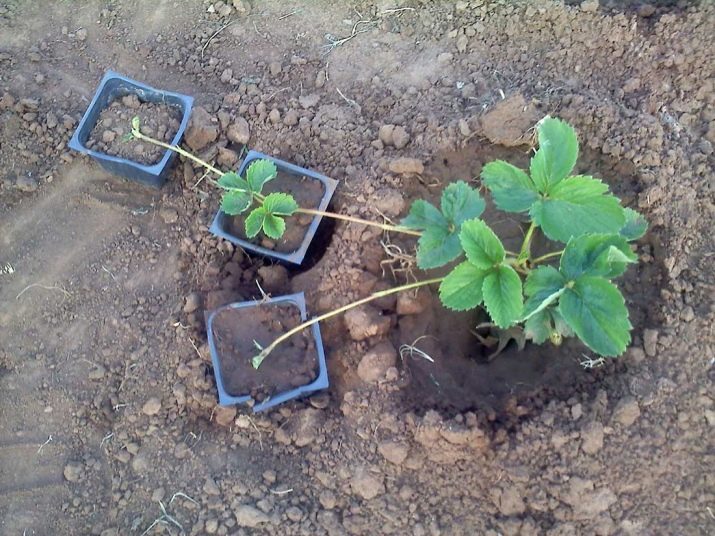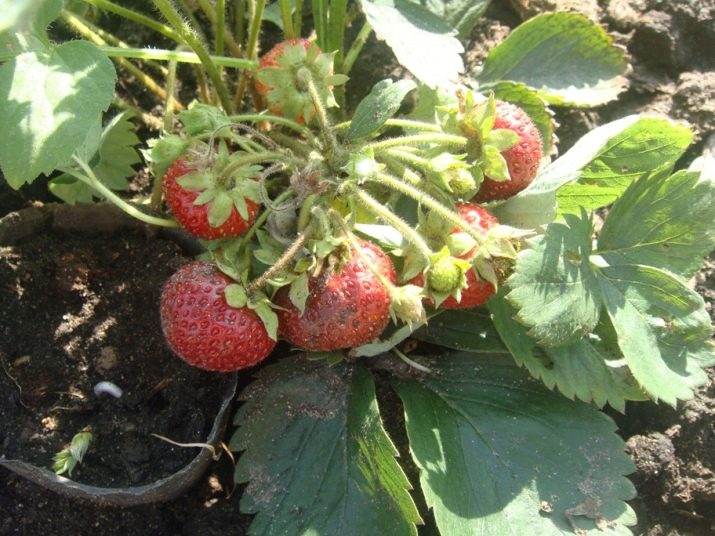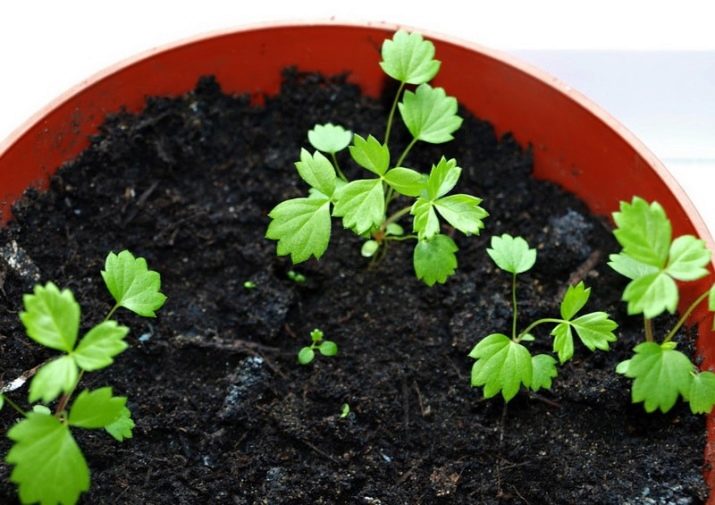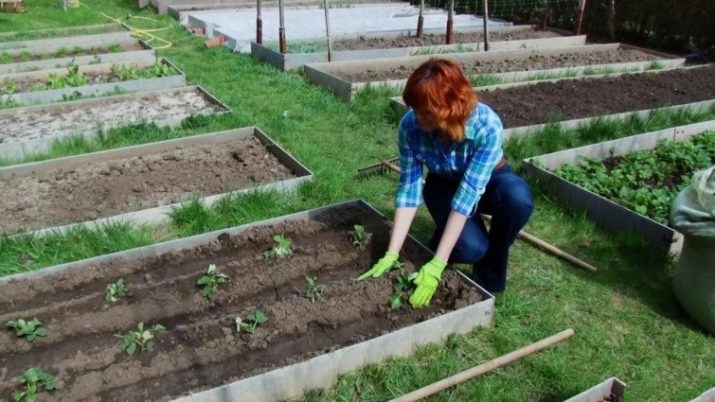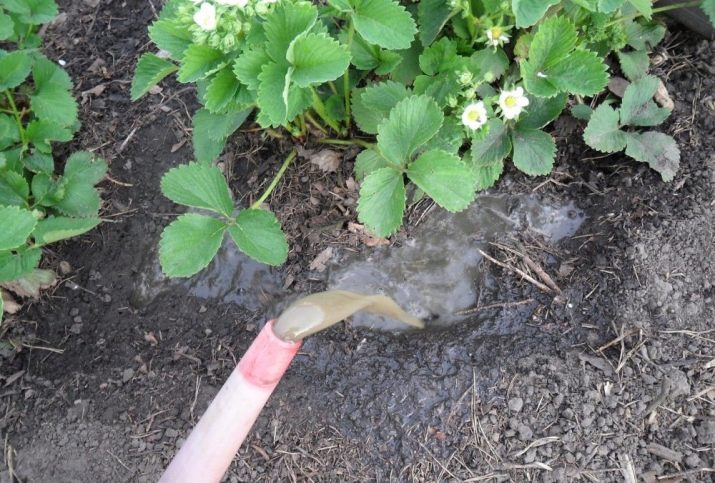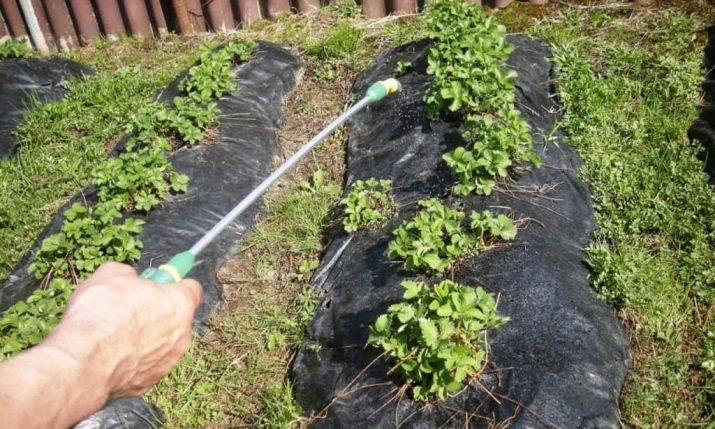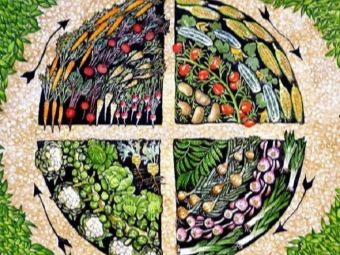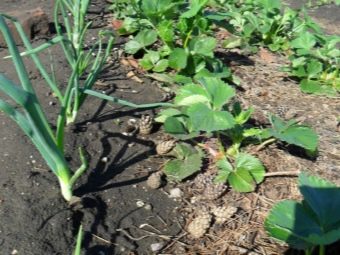When to transplant strawberries and how to do it correctly?
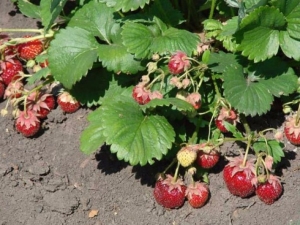
Strawberries are pretty unpretentious, but still require some care.So that your berry pleases you with always abundant harvest, follow simple conditions, one of which is the need to transplant plants to a new place every 3-5 years.
Reasons and goals
One of the reasons for the strawberry's need for seating is the growth dynamics of the bush. At the same time, additional root sockets or, as they are also called, horns, grow from the maternal root. If for the first year of life, the seedling has only a maternal root, then the next one - already 2 practically independent horns. This is the period of greatest fruiting.
In the third year, the bushes grow so much that they can be divided into 6-9 parts without damage to the life of the plant. It is at this time that the yield decreases, the berries are shrinking, as the bushes no longer have enough nutrients in the soil, excessive thickening of the foliage also interferes with protein photosynthesis.
There is a need for planting or transplanting plants to a new place.
Also the cause of transplanting strawberries is the depletion of the earth. Crop rotation rules state that no crop should grow in one place for more than a few years. The earth also needs rest and care. Also, over time, fungi multiply in the soil, causing many diseases, and the number of insect pests increases, despite all the measures taken.
Another source of weakening strawberry bushes is excessive absorption. On the stems from which the antennae grow, a lot of buds are born. This is the forerunner of new branches.
Every year they peek farther and farther from the ground, which leads to their drying out, and during the winter frosts - to freezing. In addition, such a plentiful absorption weakens strawberries. Cut the tops of such stems before transplanting - it will only benefit the plant.
The purpose of transplanting strawberries to a new place is the recovery, renewal of plants, increasing their yield and quality of berries.
By the way, some summer residents leave old bushes with small berries, claiming that they are small, but much more fragrant and jam from them turns out to be more tasty than from large berries from young plants.
Site selection and soil preparation
Most strawberry varieties love the sun and fresh air. Choose for her flat, adequately illuminated areas of land. The issue of soil composition is also important because many strawberry varieties are very demanding on the species and on the composition of the soil (especially remontant). You should also avoid lowland and marshy areas - in such a land, most likely, there is a whole breeding ground for fungus parasites. If there is no other option, make bulk beds with good drainage.
Well weed the chosen place. Be sure to farm the land before planting Bordeaux liquid or a solution of potassium permanganate.
Many gardeners use "Fitosporin" as a more environmentally friendly tool. It will disinfect the soil and destroy pathogens.
Then comes the turn of fertilizers. Which ones - depends on the soil, and on the strawberry variety, and on yourself, whether you are supporters of ecological methods of cultivation or you respect the mineral “vitamins of the earth” more. You can also combine them. For example, mix ash, superphosphate and humus (20: 40: 6000 g per square meter).
Someone advises to fertilize deep into the earth, mixing the soil and "fertility granules", while others, on the contrary, recommend leaving them on the surface and plant the plants as usual. If you have a soil with high acidity, do not use superphosphate, it is good for neutral-alkaline lands.
Although strawberries and a lover of "sunbathing" in the sun, pick up an overcast, cool day for planting. The air temperature should be approximately 15-20 degrees Celsius.
Next, dig holes in the size of the roots of seedlings and at a distance corresponding to your plan of planting. These pits moistened with water.Now carefully, straighten the rhizomes, sit them in the prepared "houses" and gently sprinkle with earth. Do not bury or bare sockets, they should be level with the level of the soil. Liberally pour the soil around the planted plants.
There are many different strawberry seating patterns, from the simplest (by carpet) to complex (in several rows on a bed). When planting a solid carpet, the bushes are planted in a checkerboard pattern, at a distance of 25 cm from each other. The single-line method consists in the fact that the bed consists of one row of plants planted with an interval of 25–30 cm, the inter-spacing distance is approximately 70 cm.
When a two-line planting plants are planted in two rows on the garden, while the distance between the bushes in the same row - 25-30 cm, the width of the rows between 30 and 40 cm, and between the beds it is necessary to leave 60-70 cm as a tape, in 3, 5 rows and others.
Now let's do mulching. Cover the bed with dry moss, sawdust, straw - what you have prepared as mulch.
Some use black foil with pre-cut holes.
Time and terms for transplanting a bush to a new place
Every few years the bushes need to be transplanted or transplanted to a new place. This raises the question of when to do it. Under certain conditions, it becomes not so important.
First, plant strawberries only on days when the sun has disappeared behind the clouds and it is not hot. Secondly, for some period, protect your berry from the direct rays of the sun and create an artificial shadow, shelter for better adaptation of the bushes on the new garden bed. Thirdly, stick to the correct irrigation system.
A little trick - the evening will be better suited for transplantation, the plant will come to its senses better during the night.
The season of the year, which is suitable for planting more than others, depends largely on what area you live in, what climate zone. After all, for the adaptation and survival of bushes need some time without frost or strong heat.
Also, your choice should be influenced by such factors as:
- variety of garden strawberry (early ripening, remontant, late);
- the age of the strawberries being resettled;
- The level of humidity and the general condition of the soil in a new place.
Spring
If you decide to transplant the berry in the spring, remember: do not plant it in unheated soil. April is ideally suited for this - a time of active growth of foliage and rapid development of roots. You must meet before the start of the flowering season. If you do not have time, do not touch the strawberries in May - the plant gives all the power to flowers and fruit to set, so the bushes most likely will not take root or, having weakened greatly, will get sick.
When transplanting flowering strawberries (although, of course, it is better to refrain from this) either cut all the flower stalks or carry it along with the ground in which it grew - this way the plant will experience less "stress" from moving. Most gardeners, gardeners convinced that the spring is better to plant strawberry seedlings obtained from the seeds. Purchased seedlings at this time can greatly "hit the pocket."
When relocating strawberries, clean the old flower bed from dead, diseased or weakened plants. Try not to damage the rhizomes of excavated strawberries.
Make the holes large both in width and in depth - the plant should be comfortable in the new “house”.
Summer
The warmest season of the year has come - summer. Harvest time and subsequent hassle. Strawberries can be relocated only when you completely release it from a load of sweet berries. Wait until the heat subsides, and get down to business. The main thing is not to pull up to the rainy season. Transplanting strawberries in the summer is the best option for many regions of Russia - Siberian, Far Eastern, Ural, Central, Altai Territory and others.
The optimal month is August. If you decide to transplant strawberries earlier, in July it is possible, but it will require you to exert both physical and mental strength.After all, planting will require everyday and painstaking care, primarily irrigation.
Here the method of sprinkling is appropriate, most importantly, make sure that the moisture does not fall on the foliage. Protect the bushes from the sun and heat.
Autumn
The beginning of autumn is the ideal time for planting or transplanting strawberries. It is still quite warm, there is already no withering heat, and it is relatively humid. Yes, and the rain will help ease the care of transplanted bushes. Before the onset of cold weather, plants will have time to settle down in a new place. Most of the seedlings planted in the fall (both young and “aged”) safely overwinter. Usually, in the autumn, most of the garden work is completed, and there is enough time for strawberry transplantation. It is best to hold this event in September.
In order for your strawberry to start bearing fruit next spring, follow some simple rules:
- it is more correct to replant seedlings of two years of age;
- if the seedlings are one-year-old, select plants with an extensive root system - about 5 cm in length and with 4-5 leaves.
After planting, you need to make a little effort to ensure that your strawberries are strong in the new garden and prepare for cooling. Constantly weed the planting from weeds, loosen the ground, water and process from pathogens and pests. The first 7-8 days after planting strawberries are advised to water every other day. After that, keep the soil slightly moist. Pour water without falling on the leaves.
If you have fertilized the soil before planting, there is no need to feed. Just re-cultivate the land from pests that settle in the top layer of soil (the first was before planting).
You can use "karbofos" solution of copper sulfate and other suitable drugs.
It is also possible to use folk recipes. For example, you can mix 3 tablespoons of vegetable oil (any), 400 g of liquid soap, 2 tablespoons of vinegar and 2 tablespoons of ash from the burnt wood. Dissolve this slurry in a bucket of water and pour the bed with this emulsion.
When the tendrils appear, they should be pruned. Because now there is no use for them, they only divert the strength of the plant from strengthening the roots.
Before winter frosts, beds are covered with mulch from materials that retain heat well - sawdust, dried needles or bark of coniferous trees, best of all are pines.
If the snow has fallen a little, it will fill up, collecting from other places.
Ways
There are several ways to reproduce the bushes of garden strawberries:
- your mustache growing strawberries;
- the separation of the bush (usually 2-3 years old);
- seeds.
Rooting a mustache or rosettes
The simplest and most practical method for breeding berries is rooting the antennae and seating the resulting rosettes from the mother bush. Among other things, this method gives the highest percentage of guarantees that the quality of strawberry-uterus will be passed on to "children". To begin to select uterine bushes - those from which you want to get "offspring." As a rule, these are the most productive and healthy plants. In the summer, when they begin to grow the antennae, leave the first 3-4, trim the rest - they are not so strong.
Keep track of your chosen mustache - as soon as they start to form sockets, carefully sprinkle them with earth or dig in in specially prepared containers with well-fertilized humus. You can lightly press them with special devices from clips. When the sockets take root a bit, trim the mustache so that the young plant does not pull the juice from the "mother". Water "babies" every day. When they release their fifth or sixth leaf and develop the roots (the root system is visible only if you put them in plastic cups), they are ripe for transplant. Further, in accordance with the selected landing period, drop them to a new place.
Dividing bush
Strawberry bushes are usually divided in the 3rd year, when about 6-8 new horns are separated from the parent root (but this can be done in the 2nd year of a plant’s life, when these horns are only 2 or 3). The plant during this period is in the prime of its capabilities, but if it is not divided, the overgrown bush lacks nutrients due to the rapid depletion of the soil, and due to the thickening of the foliage and a decrease in the photosynthesis of proteins.
They choose, as always, the strongest and well-fruiting bushes, dig, trying not to damage the root system, and carefully separate them. Many gardeners gently wash the roots for better separation.
No need to leave all the processes - select the most powerful of them. Although not necessary, many people plant them all.
Cut off the excess foliage (2-3 pivot leaves on a pair of stems will be enough), peduncles and dark roots (they are old). Most gardeners dip the roots into a solution of Fitosporin for disinfection from insects and parasitic fungi, then into a development stimulator (Kornevin, Epin, Zircon) or into a clay-manure mixture.
Here is the “recipe”: for 1 part of manure, take 3 parts of clay, mix and dilute with water to a thick cream. Then plant them in the order you chose on the new garden bed.
The method of division is good because it allows you to get a small crop in the spring season in the current season.
Seeds
The most ungrateful way of breeding strawberries. Not only does the percentage of seed germination rarely rise above 60%, there is also no guarantee that you will get strawberries with the same properties that have so admired you in the mother berry. In addition, the seeds need a special microclimate for spitting and further development, and additional illumination. Because of the need for abundant watering, the risk of infection with “black leg” is high.
To sow the seeds, select a container with a height of at least 15-20 cm, fill it with loose, fertile soil almost to its full height, pour it well. Sow the seeds, press them well against the soil and cover with clear glass. Water once a day through a watering can or spray. Lift the lid for 15-20 minutes per day for airing. Seeds begin to emerge in about half a month.
Up to the size necessary for planting in open ground, seedlings will grow in 4 months. That is, it should be sown even in winter, in January-February.
Fundamental rules
- Do not touch flowering plants when transplanting. Or, if there is no other way, tear off the flower stalks.
- Organize a transplant event either in early spring, before flowering, or in late summer or early autumn (after fruiting) - then all the forces of the bush can be directed to survival in a new place.
- In no case, do not transplant strawberries, which is tying the fruit. This will only ruin the plant.
- Properly prepare the landing site (including disinfection, fertilizing, drainage).
- Do not forget that after transplanting the berry will require a little more thorough care than before. She is experiencing stress, especially if you transfer it without the usual ground.
Aftercare
Subsequent care of plants is not difficult, you just need to water the bushes correctly. As mentioned above, the first week or two need daily watering, but do not be too zealous and flood planting, especially mulch. Then moisten the ground as needed - when the top layer dries.
Weed regularly weeds - they take nutrients from the ground, and as a result strawberries can “starve”. Also, weeds contribute to the reproduction of insect pests and thicken planting.
If you have put the necessary fertilizers into the soil before planting, there is no great need for feeding strawberries this season. If necessary, of course, you should feed the plants (if it is a remontant variety).
Take care of the condition of the land, regularly loosen the beds - compacted and settled land prevents the normal growth of the root system.
Pay special attention to the wintering of plants transplanted in the fall. They had much less time to get used to and get stronger in a new place than in spring or summer landings. Remove all antennae in the fall, many cut off the foliage. Carefully cover the beds with agrofiber, needles or use other temperature-controlled covering material.
In the spring, before flowering, treat the land of strawberry “settlements” with Bordeaux mixture, “Fitosporin” or other phytoncides to prevent infection with fungal diseases, such as verticillis, late blight, and various spots.
Tips and tricks
Since the cultivation of a berry crop such as strawberries, requires frequent changes in the place of its planting, make a certain plan for each year (or at least for 2-3 years) according to the rules of crop rotation. After the nightshade, you should not plant garden strawberries, as there are many different pests in the soil after them that will gladly pounce on your darling.
It is best to prepare plots for strawberries after onions, garlic, peas, beans, clover and alfalfa. You can also dilute the beds of strawberries with green onions - the phytoncides secreted by this plant scare off insect parasites. Carrots, greens, beets are also good as predecessors for garden strawberries.
Each season of the year has its pros and cons for transplanting strawberries.
The choice depends only on you, and, accepting it, consider:
- the climate of the area in which you live;
- soil quality of your backyard plot;
- adult strawberry variety selected for transplantation;
- method of seating bushes;
- their physical (time that you can devote to seedlings) and financial capabilities;
- availability of free land.
Variants and tips on transplanting strawberries - in the next video.

